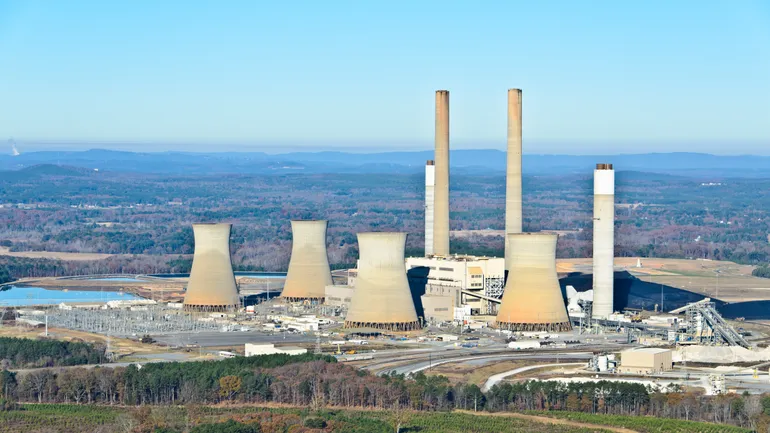
The Environmental Protection Agency is giving more than a third of U.S. coal-fired capacity two-year exemptions from the Mercury and Air Toxics Standards rule, according to a list of affected power plants the EPA appears to have released Monday.
The exemptions are part of a broad Trump administration effort to bolster coal-fired generation, including by potentially revising the MATS rule.
The EPA gave reprieves from the most recent version of the MATS rule to coal-fired power plants totaling about 71.3 GW, or about 37% of the U.S. coal fleet, which totaled about 193 GW at the start of 2024.
Power plant owners receiving the largest exemptions are Southern Co., at about 11,285 MW; NRG, at about 7,100 MW; the Tennessee Valley Authority, at about 6,660 MW; and Basin Electric Power Cooperative, at about 3,960 MW, according to the units listed by the EPA and power plant data from the U.S. Energy Information Administration.
Keystone-Conemaugh landed exemptions for two power plants in Pennsylvania totaling 3,823 MW, according to the EPA and EIA. Ameren Missouri received exemptions for two power plants totaling 3,490 MW, and Associated Electric Cooperative received exemptions for two power plants in Missouri totaling 2,482 MW. FirstEnergy’s Monongahela Power was granted exemptions for two power plants in West Virginia totaling 3,204 MW. Oklahoma Gas and Electric was granted exemptions for units in Oklahoma totaling 2,114.
President Donald Trump on April 8 signed an executive order directing the EPA to allow certain coal-fired plants to comply with a less stringent version of the MATS rule for two years after it takes effect on July 8, 2027. The most recent version of the rule, which imposes more stringent requirements for control of those emissions, was put in place by the Biden administration.
Trump said pollution control equipment that would enable the power plants to meet the latest MATS rule isn’t commercially available and that it would be a national security threat if the power plants shut down.
When the EPA updated its MATS rule a year ago, the agency said the rule would further reduce mercury, arsenic, nickel and other toxic emissions from power plants as well as emissions of fine particulate matter and carbon dioxide. The EPA said it does not expect any coal-fired units to retire because of the rule, in part because power plant owners could meet the rule’s emissions limits through commercially available control technologies and improved methods of operation.
The EPA estimated the rule would produce $300 million in health benefits and $130 million in climate benefits, and that it would cost $860 million over 10 years, starting in 2028.
There is “abundant and affordable” technology that can be used to meet the MATS rule, the Sierra Club said Tuesday. “The coal plants that were exempted can still limit emissions and do right by the communities they serve, and we will hold every coal plant operator that chooses to instead increase pollution of mercury, arsenic, and other toxic emissions accountable for choosing to make Americans sicker,” Holly Bender, Sierra Club program officer, said in a statement.
The environmental group is exploring its legal options, according to Christine Ho, a Sierra Club spokeswoman.
Gas puts pressure on coal
About 6,810 MW of coal-fired capacity retired last year, according to the Federal Energy Regulatory Commission. Based on public announcements, about 9,356 MW is set to retire this year, including about 2,020 MW that is converting to natural gas, the Institute for Energy Economics and Financial Analysis said in a report released Tuesday.
U.S. coal-fired capacity has fallen 45% since its peak in 2013 — the last year a coal-fired power plant came online. Coal plant production has dropped 62% in that period, a sign that coal generation is increasingly uncompetitive compared with other generating sources, Seth Feaster, an energy data analyst at IEEFA, wrote in the report.
The fuel switching from coal to gas reflects the challenges facing coal, according to Feaster. In November, Rocky Mountain Power, a PacifiCorp subsidiary, applied for approval to convert to gas two coal units totaling 358 MW at the Naughton power plant in Wyoming. Once approved, RMP expects to stop coal use at the plant by the end of December and return the units to service using gas by May 2026, according to the IEEFA report.
“This short six-month turnaround, and the low costs cited by RMP, highlights how quickly many existing coal plants could switch fuels,” Feaster said.






















